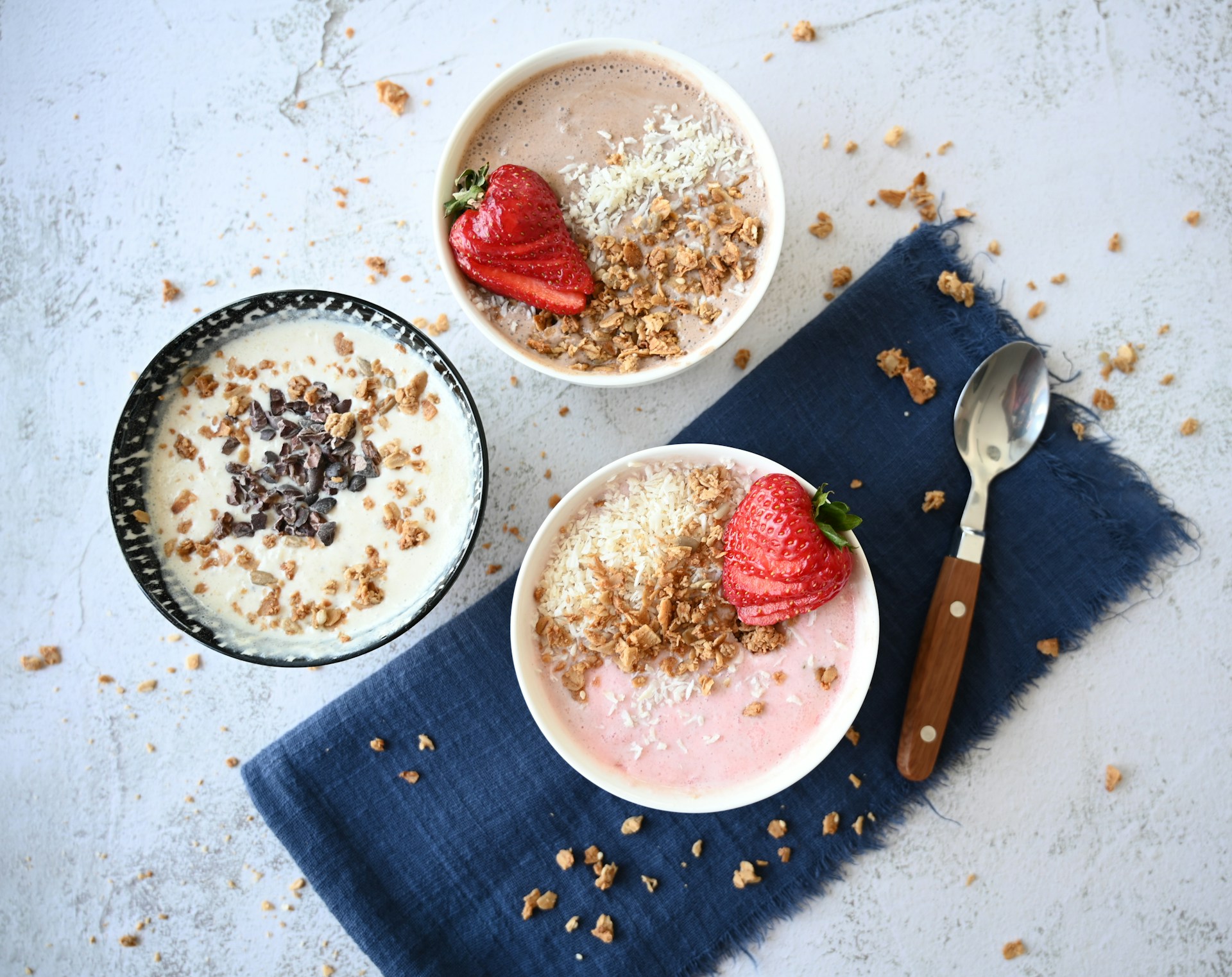In recent years, fiber has emerged as something of a nutritional superstar—and for good reason. This often-overlooked component of plant-based foods can do wonders for both your digestive health and your waistline. While many of us know that fruits, vegetables, and whole grains are “good for us,” it’s sometimes less clear why.
One of the primary reasons is fiber, a type of carbohydrate that human digestive enzymes struggle to break down. Unlike easily digestible starches and sugars, fiber doesn’t simply add calories and spike blood sugar; instead, it contributes to a well-functioning gut, helps maintain steady energy levels, and offers a range of long-term health benefits.
What Is Fiber, Exactly?
Fiber is found primarily in plant-based foods such as fruits, vegetables, whole grains, legumes, nuts, and seeds. It’s unique because, unlike many other forms of carbohydrates, it passes through the digestive tract largely intact. There are two main types of dietary fiber:
- Soluble Fiber: Soluble fiber dissolves in water to form a gel-like material. This slows digestion and can help regulate blood sugar levels by preventing rapid glucose spikes after meals. Foods like oats, beans, lentils, peas, apples, and citrus fruits are good sources of soluble fiber.
- Insoluble Fiber: Insoluble fiber doesn’t dissolve in water; instead, it adds bulk to the stool and helps keep things moving smoothly through the digestive tract. Whole wheat flour, wheat bran, nuts, beans, and many vegetables contain this type of fiber.
Both types of fiber are beneficial, and most plant-based foods contain a mix of the two. While the digestive enzymes in your body can’t readily break down fiber, this is actually a good thing. By “resisting” normal digestion, fiber creates bulk, adds structure, and interacts with gut bacteria in ways that support better health.
Fiber and Gut Health
Your gut is home to a complex ecosystem of trillions of microorganisms—commonly known as the gut microbiome. These friendly microbes help break down certain nutrients, synthesize vitamins, and influence everything from your immune system to your mood and metabolism. However, these beneficial bacteria need nourishment to flourish, and that’s where fiber steps in.
When fiber reaches the large intestine, it becomes food for the gut’s beneficial bacteria. The microbes ferment certain types of fiber, producing short-chain fatty acids (SCFAs) that help maintain the integrity of the gut lining, reduce inflammation, and even support metabolic health. In a sense, fiber “feeds” the good bacteria, promoting a balanced gut environment that can help keep harmful microbes in check.
A healthy gut microbiome has been linked to better overall health, including a stronger immune system, improved nutrient absorption, and possibly even better mental well-being. By regularly consuming fiber-rich foods, you’re essentially inviting beneficial bacteria to thrive and contribute to your health from the inside out.
Satiety, Weight Management, and Fiber
One of the standout benefits of a high-fiber diet is its role in helping maintain a healthy weight. Many of us struggle with portion sizes and feelings of hunger shortly after meals. Fiber helps address these issues because of the way it behaves in the digestive tract.
- Feeling Full Without Extra Calories: Since fiber is not easily broken down, it contributes bulk without adding many digestible calories. This bulk helps create a sense of fullness or satiety. When you feel satisfied sooner, you’re less likely to overeat.
- Slowed Digestion and Steady Energy: Fiber slows the rate at which your body breaks down other nutrients, including carbohydrates. Instead of experiencing a rapid spike in blood sugar, you get a more gradual release of energy. This steadier energy profile reduces the likelihood of energy crashes and subsequent sugar cravings.
- Chewing and Satisfaction: Fiber-rich foods often require more chewing, which can affect how satisfied you feel. Taking the time to chew a fiber-rich meal allows your body’s fullness signals to catch up with your eating pace. By savoring each bite, you’re more aware when you’ve had enough, helping prevent overeating.
As a result, a fiber-rich diet can support weight management in a sustainable way—allowing you to enjoy generous portions of nutrient-dense foods without overconsuming calories.
Blood Sugar and Cholesterol Benefits
Another major benefit of fiber involves the way it helps manage key health markers. Because soluble fiber forms a gel-like substance in the gut, it can slow down the absorption of sugars into the bloodstream. This means that adding soluble fiber to a meal rich in carbohydrates can reduce those sudden blood sugar peaks that leave you feeling tired and hungry later on. Over time, maintaining more stable blood sugar levels can help lower the risk of developing type 2 diabetes and can help people with diabetes better manage their condition.
Fiber, particularly soluble fiber, also has a cholesterol-lowering effect. The gel formed by soluble fiber can bind to cholesterol in the intestine and carry it out of the body before it enters the bloodstream. This mechanism may contribute to reduced LDL (“bad”) cholesterol levels, thereby supporting heart health and lowering the risk of cardiovascular problems over the long term.
Incorporating More Fiber into Your Diet
If you’re looking to reap the benefits of fiber, consider the following approaches:
- Start Your Day with Fiber: Opt for whole-grain cereals, oatmeal, or a smoothie loaded with berries and spinach to begin your day on a fiber-filled note.
- Add More Fruits and Vegetables: Aim to include produce at every meal. Snack on carrot sticks, apple slices, or a handful of berries. Fill half your plate with vegetables to naturally boost fiber intake.
- Choose Whole Grains: Instead of white bread, pasta, and rice, pick their whole-grain counterparts. Whole-wheat bread, brown rice, quinoa, and barley are all higher in fiber than refined grains.
- Incorporate Legumes: Beans, lentils, and peas are wonderful sources of both soluble and insoluble fiber. Add them to salads, soups, or casseroles for a nutrient-dense protein and fiber boost.
- Mix and Match: Enjoy a variety of fiber-rich foods to gain the benefits of both soluble and insoluble fibers. This diversity ensures a robust array of nutrients and beneficial compounds.
A Balanced Approach
While it’s important to include sufficient fiber in your diet, moderation and gradual changes are key. Suddenly jumping from a low-fiber to a high-fiber diet can lead to bloating, gas, and discomfort. Instead, increase fiber intake slowly, and drink plenty of water to help fiber move smoothly through your digestive tract.
If you have specific health concerns or dietary restrictions, consider seeking personalized guidance from a healthcare professional or a registered dietitian. They can help tailor a fiber-rich eating plan that fits your individual needs.
Fiber may not supply a huge burst of sweet flavor or the creamy richness of fats, but its contributions to your health are nothing short of remarkable. From encouraging a healthy gut microbiome and promoting steady energy to helping with weight management, blood sugar control, and even cholesterol levels, fiber stands as a critical component of a balanced, nutritious diet. By making a concerted effort to enjoy more whole fruits, vegetables, legumes, and whole grains, you can harness the long-lasting benefits fiber has to offer and pave the way for a healthier, more vibrant life.


